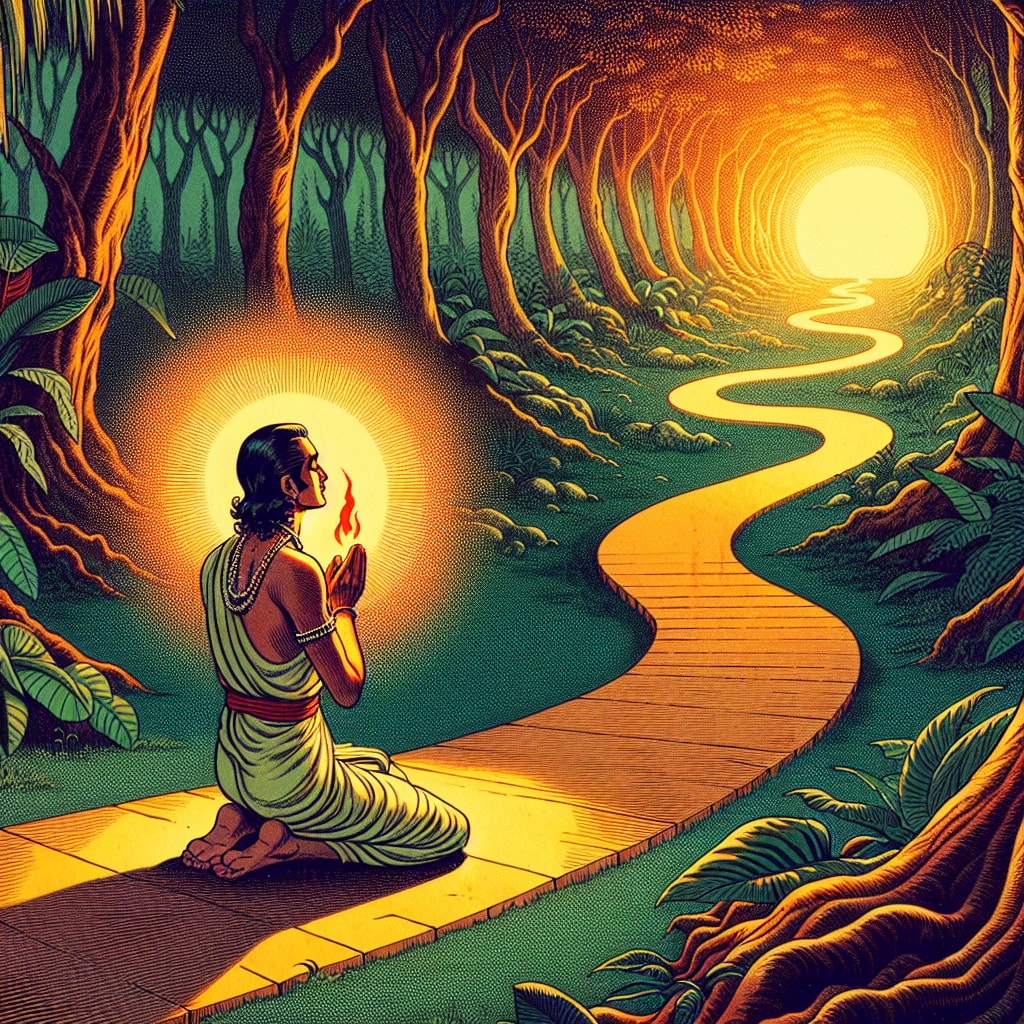Bhakti Yoga calls for an unwavering sense of commitment and pure affection towards divine consciousness. According to Krishna's discourse to Arjuna, Bhakti Yoga is integral to spiritual enlightenment and self-realization.
In the Bhagavad Gita, Bhakti Yoga is depicted as one of the three primary paths to liberation, alongside Karma Yoga (path of selfless action) and Jnana Yoga (path of knowledge). It is a spiritual pathway which guides its followers to connect with the divine through a devotional relationship that's built on mutual love, trust and surrender. Bhakti Yoga, unlike Karma Yoga and Jnana Yoga, emphasizes an emotional relationship between the devotee and the divine.
A protagonist of this path, Krishna, underscores the importance of love and devotional worship as the easiest way to attain spiritual realization. He said that those devout to him are deemed to be on the most direct course towards spiritual fulfillment and ultimate liberation.
In Sanskrit literature, the significant elliptical narratives of Bhakti Yoga can be seen woven. There, it's portrayed not only as a practice but also as a state of heart and mind that involves fostering a deep-seated sense of love and reverence towards the all-encompassing Universal consciousness.
In summary, Bhakti Yoga serves as an exploration of the emotional and spiritual connection between the individual and the divine. It's an intimate path woven with threads of love, dedication, faith, and surrender. The Bhagavad Gita reveals that devotion through Bhakti Yoga is an assured avenue to achieving liberation while maintaining a deep sense of unconditional love and reverence for the divine consciousness.

